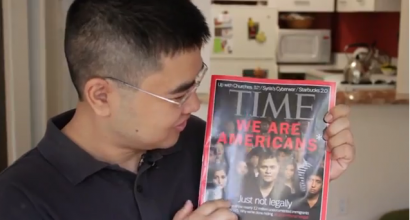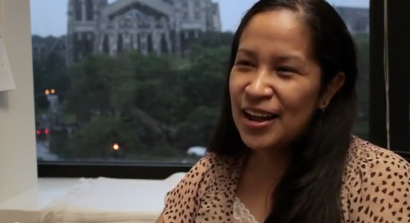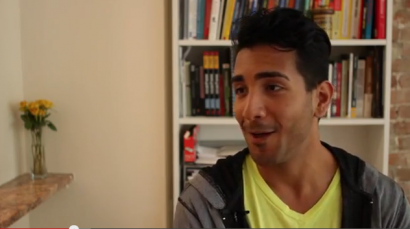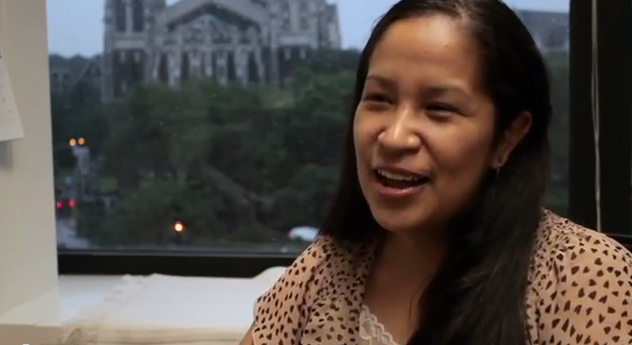

 Jong-Min, 32, remembers being in high school and being told there was no future for undocumented immigrants and no point for him to attend college.
Jong-Min, 32, remembers being in high school and being told there was no future for undocumented immigrants and no point for him to attend college.
“That was one of the misconceptions,” says this son of Korean immigrant grocers in a new documentary film aimed at explaining immigration reform to high school students.
Living Undocumented: High School, College and Beyond hopes to remove the stigma attached to being undocumented. The film presents six DREAMers who share personal stories about how they were perceived in high school when their friends and classmates found out there were in the U.S. illegally.
“They were in shock because I speak English well,” says Arline Herrera, 21, who is from Mexico.
Jaqueline Cinto, 26, who is also of Mexican descent, says people often assumed she was undocumented “just because I’m Mexican.”
Yeser Huesca, 18, says he tried to correct misimpressions that every undocumented immigrant “cleans bathrooms and mows the lawn.” He would tell people his uncle works as a plant manager and that his father owns a small business.
Tatyana Kleyn, director of the 17-minute film, said there is a lot of misinformation among high school students about undocumented immigrants. She adds that some students may be “too shy, too embarrassed or too ashamed” to talk about their status.
“The idea was to make a video and show it in schools,” said Kleyn, an associate professor in the Bilingual Education and TESOL (Teachers of English to Speakers of Other Languages) program at The City College of New York. “With the accompanying lesson plan and resource guide for students and educators, it is especially useful in middle and high school classes.”
The film began making the rounds of public schools in New York two months ago. Kleyn and co-producer Ben Donnellon are hoping to show it at secondary schools around the country.
“Although it’s a very New York context, all over the country the circumstances are similar,” said Kleyn.
The six students shared stories of how they came to the United States, how they lived in a cloud of fear of being deported and how they are moving on with their lives by finishing college.
Irving Mota, 24, remembers crossing the border with a coyote, or one who smuggles people to the U.S., at age 6. He was with his brother and mother.
“To me it was an adventure, walking to Tijuana and spending the night there because the coyote fell asleep,” he recalls. “Now as I look back, it must have been terribly alarming for my mom for us to be there.”
Another border crosser, Arline says she and sister traveled by car with their mother and were instructed to be quiet at all times. “Unfortunately, I did not stop crying,” she says, introducing a light moment to the poignant film. The siblings made it to California and later to New York where they were reunited with their father.
Jong-Min’s circumstances were not as action-packed. His parents moved to the U.S. in 1981 to study. He was one year old. Four years later, their student visas expired. “By the time I was 5, I became undocumented,” he says.
In high school, the students learned to adjust to being on the margins of society by blending in, shrugging off unsavory comments and just staying positive.
Walde Diabate, 18, who describes herself as an African and a Muslim, remembers being “shy and ashamed of myself” because of her status. She now works for the Sauti Yetu Center for African Women advocacy organization.
Jaqueline Cinto, 26, became conflicted about her identity. Not being accepted as American and not being fully Mexican, she felt she was, “in that gray area of not knowing what to call myself.” She is now a co-founding member of the New York Youth Leadership Council where she is engaged in advocacy work.
While the students appeared before the cameras, they also worked behind the scenes providing research and resources for students who may want to seek additional information. There are, for instance, links to websites on the DACA program and New York City’s programs for immigrant students.
“We want to show it to the students, also the teachers and the guidance counselors. We want the students to know that if they want to go to college there are resources and support systems out there,” said Kleyn, who is of Russian-Jewish ethnicity. Her family came to the U.S. as political refugees in 1980 when she was 6.
For Arline, who lived the Bronx, worked in Brooklyn and went to school in Manhattan, the long commute from one borough to another appeared to mirror her immigration predicament.
She said, “And so I’m sitting there waiting for the train to come and I thought to myself I’m still waiting for something to come and it’s not just a train. I tried not to cry. I think of the positive things, that in the end it’s all going to be worth it.”
Fi2W is supported by the David and Katherine Moore Family Foundation and the Ralph E. Odgen Foundation.




